Shining a Spotlight on Tough-As-Nails L.A. Crime Reporter Agness Underwood

Portrait of Agness “Aggie” May Underwood. (ca. 1933, Herald-Examiner Collection/Los Angeles Public Library)
At a time when most female journalists were writing advice columns and reporting on well-heeled members of high society, Los Angeles newswoman Agness “Aggie” Underwood was harboring a murderess named Hazel Glab.
The year was 1935, and Glab was about to stand trial. Underwood refused to let reporters from competing news outlets track down the accused killer for an interview, going so far as to use her own home to hide her. Eventually, Glab was convicted of murder, but not before Underwood got her exclusive interview.
Little-known today, Aggie Underwood was a gutsy broad who both created and typified the image of the tough-as-nails lady journalist long before it became a film noir trope. In fact, in her 1949 biography, Underwood wrote, “[a]fter covering big-time trials for fifteen years or more, I’m pretty sure I don’t act like celluloid newspaperwomen.”
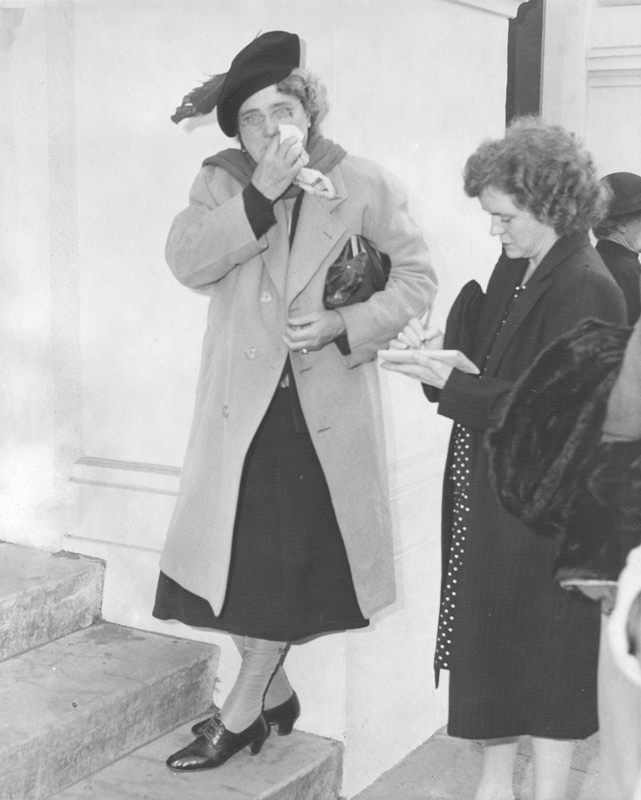
Agness Underwood, Herald-Express reporter, at work during Aimee Semple McPherson funeral, interviewing Mrs. Ellen McNeely of Indio. (ca. 1944, Herald-Examiner Collection/Los Angeles Public Library, caption by Los Angeles Public Library.)
Born in 1902 and raised in a foster home in Indiana after her mother died in 1907, Agness May Wilson was a gifted, precocious child who nonetheless grew bored with academia and dropped out of high school. At age 16, she moved to San Francisco then relocated to Los Angeles, where she lived at the Salvation Army’s home for working women, making ends meet by working in a department store. Following a short stint in Salt Lake City, Underwood returned to L.A. and worked as a waitress before marrying Harry Underwood and giving birth to a daughter and a son.
When Underwood’s husband told her they couldn’t afford to buy her new stockings, Underwood resolved to get a job and earn the money to buy them herself. Soon, a friend asked if she would be interested in a temp job as a switchboard operator at the Los Angeles Record, and at the age of 24, Underwood embarked on her long and storied newspaper career, eventually becoming the country’s first female city editor of a major metropolitan daily paper, the Evening Herald and Express, in 1947.
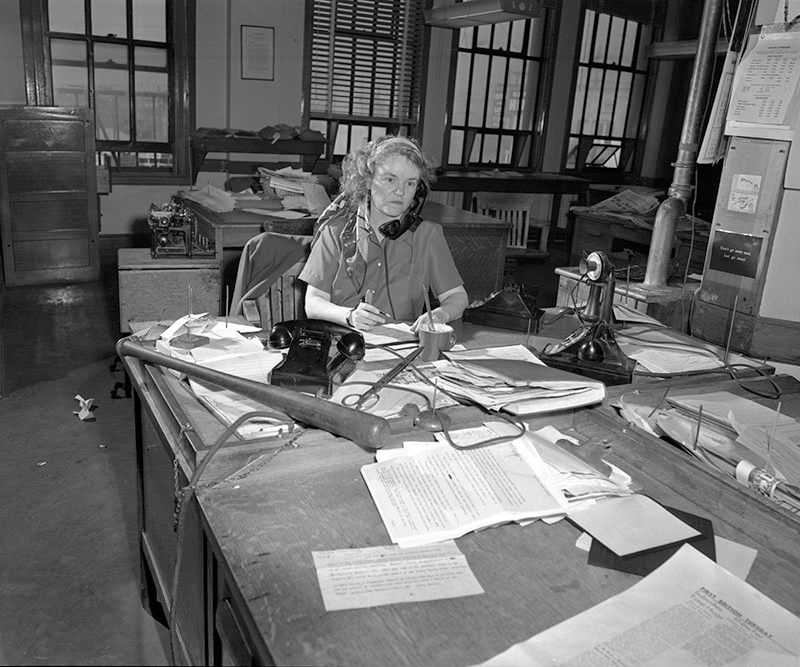
Agness “Aggie” Underwood at her desk in 1949, two years after becoming the city editor for the Los Angeles Herald and Express. She kept a baseball bat handy in case she needed to keep overzealous Hollywood press agents in line. (Herald-Examiner Collection/Los Angeles Public Library, caption by Los Angeles Public Library.)
Throughout her career, Underwood interviewed high-profile folks like Amelia Earhart, attended the autopsy of actress Thelma Todd, and became fast friends with gangster Mickey Cohen. She reported on female prisoners in Tehachapi for a three-part series called “Forgotten Women,” and even helped a woman on death row get her sentence commuted to life after the prisoner revealed she was a victim of domestic violence. (She killed her husband in self-defense.)
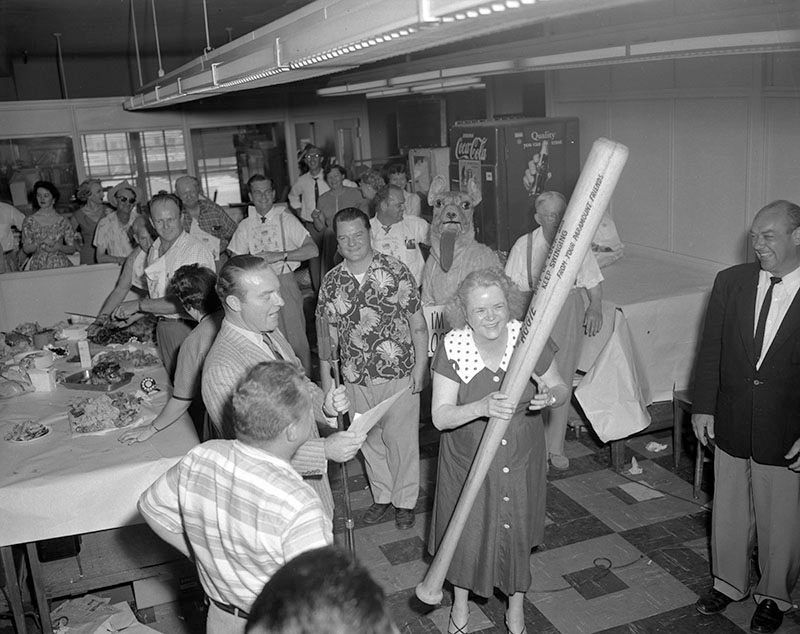
Aggie Underwood stands in the midst of the newsroom holding an oversized baseball bat. The bat was a gift from her colleagues to commemorate her tenth anniversary as city editor of the Herald; it was inscribed, ‘To Aggie, Keep Swinging.’ (1957, Herald-Examiner Collection/Los Angeles Public Library, caption by Los Angeles Public Library.)
Long neglected in the annals of history, Aggie Underwood has finally gotten her own moment in the spotlight with a photo exhibition at the Los Angeles Public Library: “The First with the Latest! Aggie Underwood, the Los Angeles Herald, and the Sordid Crimes of a City.” In addition to featuring rare photos of Underwood, “The First with the Latest!” chronicles 16 crimes the tenacious reporter covered through photos culled from the Los Angeles Herald-Examiner photo collection.
Joan Renner, creator of the websites Deranged L.A. Crimes and Vintage Powder Room, is the curator of the exhibit and author of its accompanying catalog. She decided to curate the exhibit on Underwood because of the important role the late newswoman played, not just in L.A. history, but in the history of crime reporting overall. Underwood has also been a major influence on Renner’s own work. “Each time I write about an historic L.A. crime I feel like I’m a direct descendant of Aggie’s,” she says. “She whispers in my ear.”
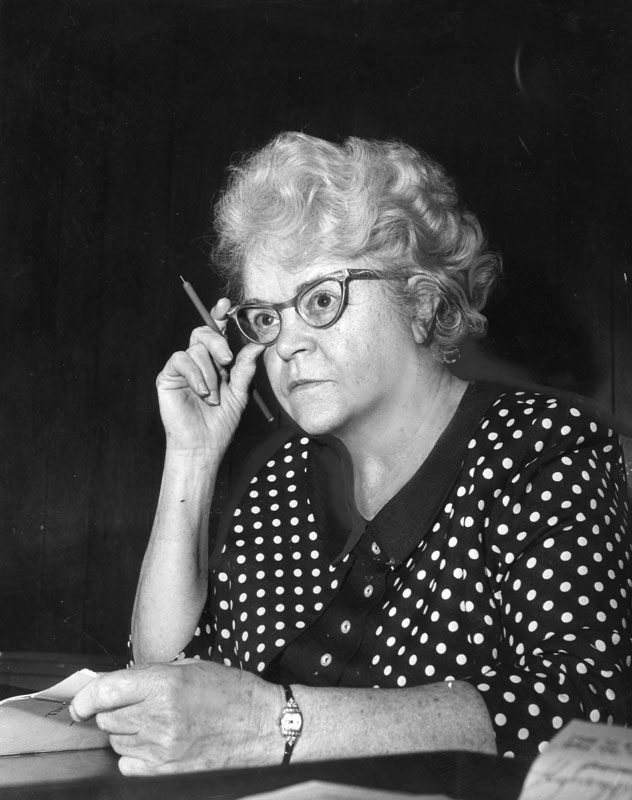
Aggie Underwood, n.d. (Herald-Examiner Collection/Los Angeles Public Library)
Perhaps the highlight of Underwood’s early career was her work on the 1947 still (officially) unsolved “Black Dahlia” murder. Underwood said she was the first reporter to arrive on the scene after the grisly discovery of Elizabeth Short’s bisected body, a crime that shocked the entire country. In fact, Underwood maintained that she knew the identity of the Black Dahlia’s killer, but her promotion to the post of city editor of the Herald-Express ostensibly kept her from verifying and imparting the news to the public.
Renner had the opportunity to speak to one of Underwood’s grandsons about the Black Dahlia affair. “He told me that when he and his brothers realized what their grandmother’s career had been like, they asked her if she could name the Dahlia’s killer,” she says. “It was then she told them that it didn’t matter anymore because he was dead, and she wouldn’t say more.”
As a journalist, “Aggie was out covering everything from earthquakes and floods to murder and mayhem,” says Renner. “She interviewed killers and victims with skill and compassion.” When Underwood retired from the business in 1968 at the age of 65, hundreds attended her farewell party, which was hosted by Bob Hope. On that occasion, says Renner, “she was overheard to say to a colleague, ‘Please don’t forget me.’ I don’t see how we ever could.”
“The First with the Latest! Aggie Underwood, the Los Angeles Herald, and the Sordid Crimes of a City” is on view at the Los Angeles Central Library through January 10, 2016.

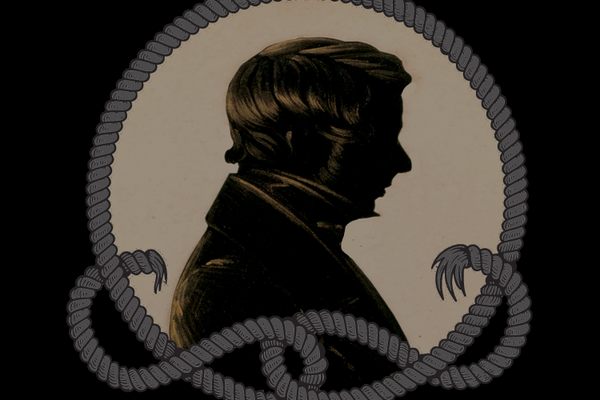


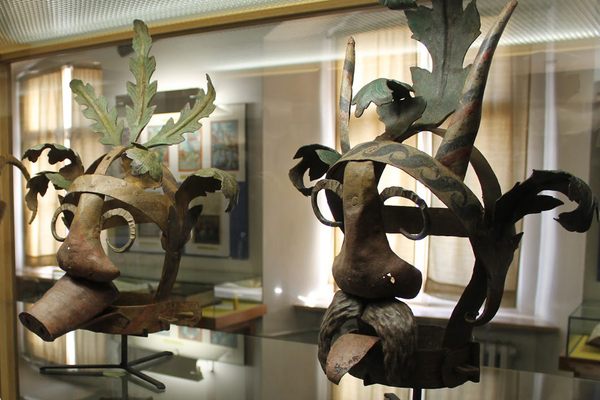




Follow us on Twitter to get the latest on the world's hidden wonders.
Like us on Facebook to get the latest on the world's hidden wonders.
Follow us on Twitter Like us on Facebook